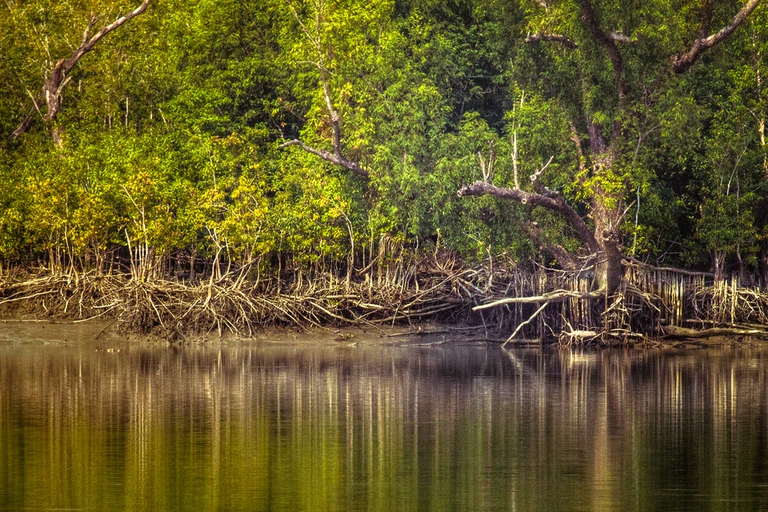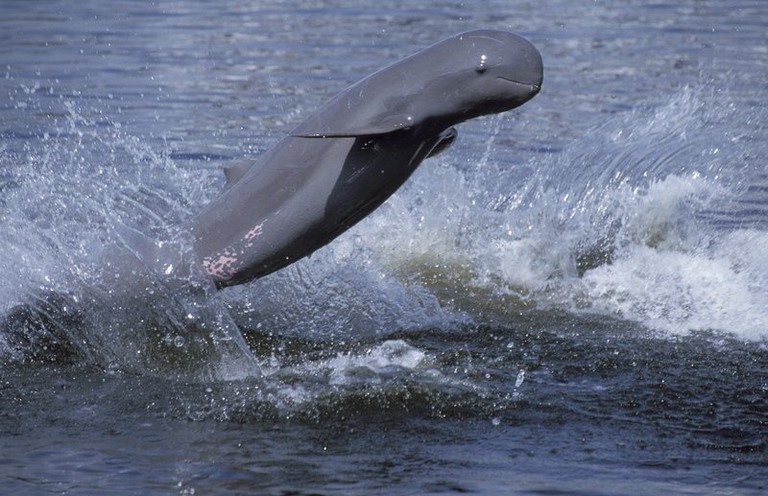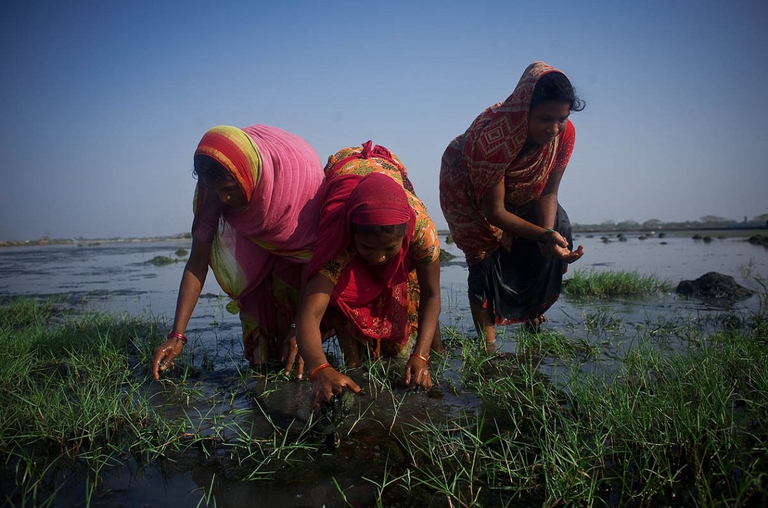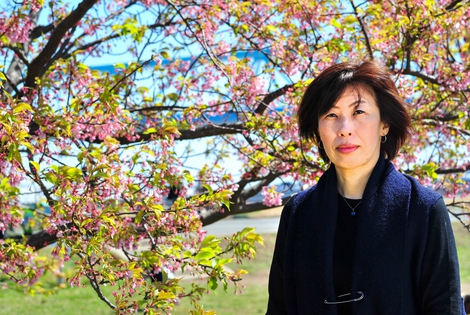
Three people putting the protection of the planet before themselves. Three powerful stories from Latin America, the deadliest region for environmental activists.
L’imbarcazione affondata nei pressi del parco nazionale Sundarbans mette a rischio la sopravvivenza delle persone e delle specie animali che abitano la foresta e il fiume.
A cargo vessel carrying 1,235 tonnes of coal sank in Bangladesh. According to experts, slag from coal production contain heavy metals including arsenic, lead, and mercury that represent a threat to human, animal, and plant life.
The incident occurred on Saturday 19 March, when cargo vessel MV Sea Horse-1 sank in the Shela River, in the heart of the Sundarbans National Park, the world’s largest mangrove forest. The Sundarbans, which extends for 80 kilometres from the coasts, is an ancient forest, the only one left of the majestic jungles that once covered the plains of the Ganges. The area, turned into natural reserve in 1966 and World Heritage Site of UNESCO, is home to an incredible biodiversity including threatened species, such as the Bengal tiger (Panthera tigris tigris), the Irrawaddy dolphin (Orcaella brevirostris) and the South Asian river dolphin (Platanista gangetica).
These are only the most iconic species, as the park is also home to threatened species of rare fish, crabs, otters, crocodiles, and birds. Moreover, the park is home to gipsy families that fish by availing themselves of trained otters. After the ship capsized, the government has suspended other ships from sailing the Shela River, while it hasn’t been salvaged yet. However, similar bans in the past have been withdrawn quickly, environmental activists warn.
In December 2014, another catastrophe occurred the Sundarbans. A Bengalese oil tanker sank after it collided with a cargo vessel, spilling 350,000 tonnes Heavy Fuel Oil into the Shela River. The government had banned cargo ships from plying the Shela River, but within a month the ban was lifted. In May 2015, a ship carrying 500 tonnes of fertilizer sank in Bhola River in the Sundarbans, while in October a coal-laden cargo vessel carrying 510 tonnes of coal sank into the Passur River.
Despite the long series of incidents, similar ships continue sailing this unique and fragile ecosystem. “When coal-carrying vessels sink, these heavy metals mix with the water, endangering aquatic life,” said Abdullah Harun Chowdhury, a Professor at Khulna University in Bangaladesh. “Mercury from coal is converted into methyl mercury, a toxic compound that harms people and others animals like crocodiles, dolphins, birds, fishing cat, and otter that consume contaminated fishes. Population of the aquatic animals will decrease and long-time impact on aquatic lives like loss of breeding capacity, habitat loss, injury of respiratory organs, hearts, eyes and skins will happen due these heavy metals.”
According to Chowdhury, heavy metals can also affect the growth and survival of major mangrove trees such as the Sundari tree (Heritiera fomes) and damage the spawning grounds of shrimp, which represent a source of livelihood for local communities. Bangladesh’s forest department has filed a case against the owner of MV Sea Horse-1 and five others involved and formed a committee to investigate the incident.
Despite the numerous catastrophes, Bangladesh is planning the construction of a coal-fired thermal power station near the Sundarbans. Last week, hundreds of people marched to protest against the construction of the plant. The rally, named “the long march”, departed from Dhaka, Bangladesh’s capital, and covered 250 kilometres to get to Rampal district, at the border with the Sundarbans. Numerous environmental activists from Bangladesh and India took part to the demonstration.
“We cannot allow any move to destroy this world heritage,” said Ruhin Hossain, one of the organisers of the march. “The Sundarbans has been serving as a protective fence for nature as well as the habitation of the whole southern region of the country. More than one million people’s livelihood depends on the Sundarbans while the forest is protecting more than 40 million people from natural disasters”. According to a report by South Asians for Human Rights, the realisation of the new power station has already forced hundreds of families to move away, with no notice and adequate compensation.
The association says that the power plant, alongwith intensifying the use of coal in one of the countries that are most vulnerable to climate change in the world, will exponentially increase pollution and the risk of environmental disasters during the carriage of coal using rivers across the forest.
Siamo anche su WhatsApp. Segui il canale ufficiale LifeGate per restare aggiornata, aggiornato sulle ultime notizie e sulle nostre attività.
![]()
Quest'opera è distribuita con Licenza Creative Commons Attribuzione - Non commerciale - Non opere derivate 4.0 Internazionale.
Three people putting the protection of the planet before themselves. Three powerful stories from Latin America, the deadliest region for environmental activists.
Influential scientist, activist and author Vandana Shiva fights to protect biological and cultural diversity, and against GMOs.
Kimiko Hirata has blocked 13 new coal plants in Japan, but she hasn’t done it alone. The 2021 Goldman Prize winner tells us about her movement.
The Goldman Environmental Prize, the “green Nobel Prize”, is awarded annually to extraordinary activists fighting for the well-being of the planet.
We talk to Shaama Sandooyea, activist and marine biologist from Mauritius onboard Greenpeace’s Arctic Sunrise ship in the heart of the Indian Ocean.
Arrested for supporting farmers. The alarming detention of Disha Ravi, a 22-year-old Indian activist at the fore of the Fridays for Future movement.
Water defender Eugene Simonov’s mission is to protect rivers and their biodiversity along the borders of Russia, China and Mongolia.
Chibeze Ezekiel, winner of the 2020 Goldman Environmental Prize for Africa, is fighting to guide new generations towards a renewable future.
Leydy Pech, winner of the 2020 Goldman Environmental Prize for North America, is the beekeeper who defended Mexican Maya land against the agro-industry.











